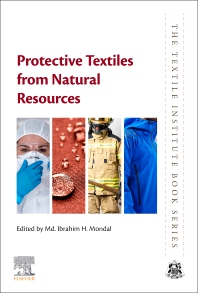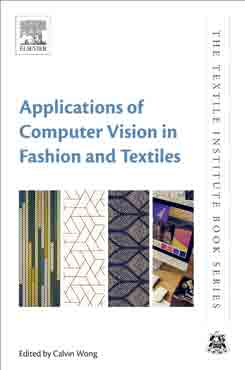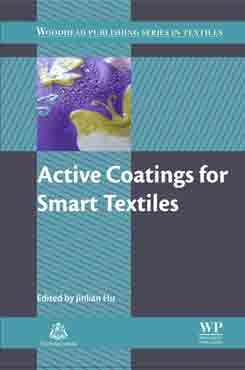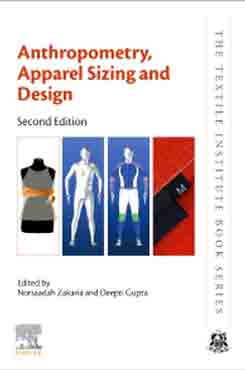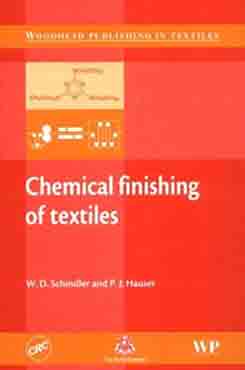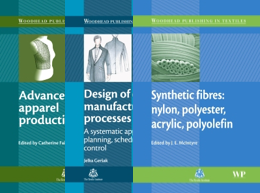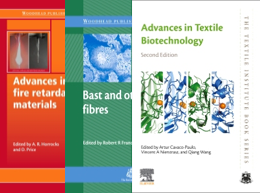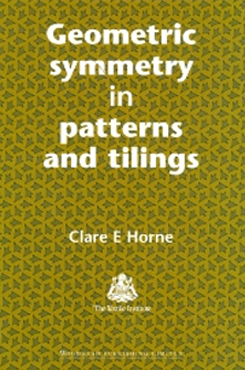Description
Protective Textiles from Natural Resources provides systematic coverage of the fundamentals, production methods, processing techniques, characterization techniques, properties and applications of natural textile products for protective purposes. The subject of this book is an important kind of technical textile designed to protect the wearer from injuries, illness and death. They offer enhanced protection against phenomena including heat, cold, flame, chemical, biological, nuclear agents, radiation, disaster and even ballistics. As no single type of clothing can be adequate for all kinds of protection, extensive research is carried out to develop protective clothing for specialized civilian and military applications.
The latest research on the use of natural fibres in PPE is also covered, which could make a significant contribution to the fight against the spread of COVID-19. This comprehensive guide explores a wide variety of themes from material processing and design to finished products, through protection against specific hazards to specific applications, including all significant new developments on natural materials for protective textiles.
Key Features
- Explains the latest technologies related to fibre extraction from natural sources, chemical treatments, weave constructions, fabric finishes and coatings.
- Includes the latest research on natural fibers in personal protective equipment (PPE) to protect wearers from bacterial and viral contamination.
- Explains the state of the art in testing methods and standards for protective clothing
Readership
Academic and industry researchers working in textiles and fibre engineering. Manufacturers of protective clothing products.
Table of Contents
- Part One. Protective textile materials
- 1. Introduction to protective textiles
- 1.1. Introduction
- 1.2. Protective textiles – an overview
- 1.3. Materials for the manufacture of protective textiles from natural resources
- 1.4. Manufacturing techniques of protective clothing from natural resources
- 1.5. Antibacterial, antiviral protective textiles
- 1.6. Protective masks manufactured from natural resources
- 1.7. Nuclear and radiological protective clothing
- 1.8. Spacesuits for protection and thermal comfort
- 1.9. Protective clothing for civilian and specialist industrial workers
- 1.10. Chemical protective clothing (CPC)
- 1.11. Fire/flame-retardant apparel
- 1.12. Ballistic protection
- 1.13. Conclusion
- 1.14. Future scope of protective textiles
- 2. Protective medical textiles for patients and health professionals
- 2.1. Introduction
- 2.2. Different types of protective medical textiles
- 2.3. Antimicrobial agents for personal protective equipment
- 2.4. Manufacturing process
- 2.5. Selection of nonwoven fabrics for medical protective clothing
- 2.6. Regulations and recommendations for personal protective equipment in the healthcare sector
- 2.7. Recent development
- 2.8. Reuse and recycling of protective medical textiles (biodegradability/disposable materials, cleaning, sterilizing, etc.)
- 2.9. Conclusion
- 2.10. Challenges and future perspectives
- 3. Nanomaterial-based smart and sustainable protective textiles
- 3.1. Introduction
- 3.2. Protective textiles
- 3.3. Nanomaterial-based protective textiles
- 3.4. Environmental implications
- 3.5. Conclusion
- 3.6. Challenges and future perspectives
- 4. Protective textiles from the past and for the modern age
- 4.1. Introduction
- 4.2. Natural fibres from the past: what we have lost and what we need to forget
- 4.3. Modern textiles
- 4.4. The case of waterproof materials
- 4.5. Eco-friendly textiles
- 4.6. Modern green treatments of textiles
- 4.7. Conclusion
- 4.8. Future perspectives
- 5. The concept of biomimetics in the development of protective textiles
- 5.1. Introduction
- 5.2. Principles of biomimetic protective textiles
- 5.3. Applications of biomimetic protective textiles
- 5.4. Development models of biomimetic protective textiles technology
- 5.5. Conclusion
- 5.6. Future outlook
- 6. The limitations of natural resources in the use of medical and protective textiles
- 6.1. Introduction
- 6.2. Natural resources of textiles
- 6.3. Medical and protective textiles
- 6.4. Antimicrobial textile nanocomposite
- 6.5. Antimicrobial mechanisms
- 6.6. Conclusions
- 6.7. Future research trends
- Part Two. Microbial (viruses, bacteria and fungi) protective textiles
- 7. Microbial (viruses, bacteria and fungi) protective personal clothing
- 7.1. Introduction
- 7.2. Microorganisms: bacteria, viruses and fungi
- 7.3. Infectious, nosocomial diseases, pandemics and the need for microbial protective personal clothing
- 7.4. Infectious agents: bacteria and viruses, their nature and adhesion to textiles
- 7.5. Strategies used for personal protection against infectious agents
- 7.6. Antimicrobial and antiviral finishing techniques
- 7.7. Antimicrobial and antiviral personal protective clothing
- 7.8. Methods used to fix the natural antimicrobials to textiles, while maintaining breathability
- 7.9. Activity of biofunctionalized textiles against viruses and bacteria using antimicrobial agents from natural resources
- 7.10. Cytotoxicity of antimicrobial and antiviral agents used in textile finishing
- 7.11. Mechanism of antiviral and antimicrobial activity
- 7.12. Antiviral and antimicrobial test methods
- 7.13. Conclusion
- 7.14. Future scope/prospective
- 8. COVID-19 protective textiles for breathable face masks
- 8.1. Introduction
- 8.2. Information on COVID-19
- 8.3. Available COVID-19 protective commodities
- 8.4. The standard requirements of COVID-19 protective commodities
- 8.5. COVID-19 protective textiles for breathable face masks
- 8.6. The advantages of medical protective textiles obtained from natural resources (PTNR)
- 8.7. The crucial technology of PTNR for breathable face masks to prevent COVID-19 transmission
- 8.8. Conclusion
- 8.9. Information for new sources of further advice
- 9. Advances on virucidal textile coatings
- 9.1. Introduction
- 9.2. Pathogenic viruses and their mode of action
- 9.3. Virucidal agents and inactivation mechanisms
- 9.4. Methods for virucidal textile preparation
- 9.5. Virucidal textile application
- 9.6. Conclusions
- 9.7. Challenges and outlook
- Part Three. Protection against different agencies and applications
- 10. High-performance thermal and cold protective clothing
- 10.1. Introduction
- 10.2. Thermal protective textiles
- 10.3. Cold protective textiles
- 10.4. Conclusion
- 11. Protective smart textiles for sportswear
- 11.1. Introduction
- 11.2. Smart textile materials for protection
- 11.3. Functions of smart textiles
- 11.4. Innovations in smart textiles
- 11.5. Smart textiles for sportswear
- 11.6. Smart textiles for human safety
- 11.7. Conclusions
- 11.8. Outlook and future trends
- 12. Waterproof breathable fabrics and suits
- 12.1. Introduction
- 12.2. Classifications of breathable fabrics
- 12.3. Densely woven fabrics
- 12.4. Microporous membranes and coatings
- 12.5. Electrospinning
- 12.6. Hydrophilic membranes
- 12.7. Hydrophobic membranes
- 12.8. Combination of microporous hydrophobic and hydrophilic membranes
- 12.9. Printing of retroreflective microbeads
- 12.10. Smart breathable fabrics based on shape memory polymers (SMPs)
- 12.11. Smart breathable fabrics based on phase change materials (PCMs)
- 12.12. Fabric based on biomimetics
- 12.13. Waterproof breathable suits
- 12.14. Characterization of waterproof breathable fabrics
- 12.15. Conclusion
- 13. Breathable and adaptive thermo-responsive personal protective clothing
- 13.1. Introduction
- 13.2. State of the art on breathable and adaptive thermo-sensitive PPC
- 13.3. Related technologies of breathable and adaptive thermo-sensitive PPC
- 13.4. Conclusions
- 13.5. Future outlook
- 14. Ultraviolet-blocking protective textiles
- 14.1. Introduction
- 14.2. Effects of UV on the human body
- 14.3. Various parameters for UV-protective textile fabrics
- 14.4. Various techniques for blocking UV using textiles
- 14.5. Impacts of different textile factors
- 14.6. Eco-friendly materials for the finishing of UV-protective textiles
- 14.7. Conclusions
- 14.8. Future trends and perspectives
- 15. Natural fibre-based protective textiles for noise reduction applications
- 15.1. Introduction
- 15.2. Natural fibrous materials
- 15.3. Theoretical foundation and measurements
- 15.4. Structural design of natural fibrous materials
- 15.5. Conclusion
- 15.6. Future perspective
- 16. Protective textiles from natural resources for electromagnetic shielding
- 16.1. Introduction
- 16.2. Electromagnetic shielding – theoretical basics
- 16.3. Measurement of the electromagnetic interference shielding effectiveness
- 16.4. Materials with electromagnetic shielding properties
- 16.5. Conclusions
- 16.6. Future perspectives
- 17. Fibre-based wearable electronic technology for personal protective clothing
- 17.1. Introduction
- 17.2. Working environment and protective clothing
- 17.3. Material design and fabrication strategies
- 17.4. Wearable devices for personal protective clothing
- 17.5. Characterization of e-textiles
- 17.6. Advantages and disadvantages of natural renewable textiles
- 17.7. Conclusions
- 17.8. Future studies
- 18. Nuclear and radiological protective clothing
- 18.1. Introduction
- 18.2. Types and characteristics of ionizing radiation
- 18.3. Exposure to ionizing radiation
- 18.4. Conventional interactions of ionizing radiation with biological matter
- 18.5. Health effects of ionizing radiation
- 18.6. Occupational nuclear and radiological hazards
- 18.7. Protection from ionizing radiation
- 18.8. Protective clothing and other personal protective equipment against ionizing radiation
- 18.9. Recent developments of protective clothing against ionizing radiation
- 18.10. Some commercial products available in the market for protection against ionizing radiation
- 18.11. Electromagnetic nonionizing radiation
- 18.12. Protective clothing against electromagnetic nonionizing radiation
- 18.13. Conclusions
- 18.14. Future perspective
- 19. Spacesuits for protection and thermal comfort
- 19.1. Introduction
- 19.2. Basics of a spacesuit
- 19.3. Spacesuits garments as protective clothing
- 19.4. Thermal comfort
- 19.5. Thermoregulation and insulating mechanisms of a spacesuit
- 19.6. Physiological design of a spacesuit
- 19.7. Human thermoregulation model for a spacesuit
- 19.8. Conclusions
- 19.9. Future perspective
- 20. Protective clothing for firefighters and rescue workers
- 20.1. Introduction
- 20.2. Components of firefighters’ and rescue workers’ protective clothing
- 20.3. Factors affecting the selection of the fabric for fire protective clothing
- 20.4. Characterization technique to determine the thermal behaviour of fabric
- 20.5. Chemical modification to impart flame retardance/resistance to the fibre
- 20.6. Approaches to create firefighting clothing through natural resources
- 20.7. Related standard specifications
- 20.8. Conclusion
- 21. Chemical and biological protective textiles
- 21.1. Introduction
- 21.2. Contamination agents
- 21.3. Chemical protection fabrics
- 21.4. Biological protection fabrics
- 21.5. Application example case studies
- 21.6. Conclusions and future perspectives
- 22. Protective textiles in defence and ballistic protective clothing
- 22.1. Introduction
- 22.2. Classification of ballistic protection materials
- 22.3. Materials used for ballistic protection
- 22.4. Protective finishes
- 22.5. Threat and protection
- 22.6. Factors affecting ballistic protection performance
- 22.7. Performance evaluation methods
- 22.8. Computational modelling and simulation of ballistic performance
- 22.9. Conclusion
- 22.10. Challenges and future trends
- 23. Protective clothing for civilian and specialist industrial workers
- 23.1. Introduction
- 23.2. Fabrics from natural resources for protection
- 23.3. New technologies for protective clothes
- 23.4. Environmental and workplace conditions
- 23.5. Conclusions
- 23.6. Future trends
- Part Four. Test and management of protective textiles
- 24. Processing techniques and test methods of protective textiles
- 24.1. Introduction
- 24.2. Processing of protective textiles
- 24.3. Specialized technique for protective textile manufacturing
- 24.4. Test methods for parameters in protective textiles
- 24.5. Conclusion
- 24.6. Future trends
- 25. Care, maintenance and disposability of medical and protective textile products
- 25.1. Introduction
- 25.2. Cleaning of textile materials
- 25.3. Cleaning of medical and protective clothing
- 25.4. Necessity of cleaning to protect fabrics and health
- 25.5. Care and maintenance of medical and protective textiles
- 25.6. Green cleaning approaches
- 25.7. Environmental impact and health hazards of cleaning agents
- 25.8. Standards for care and maintenance of medical and protective textiles
- 25.9. Storage of clothing and precautions
- 25.10. Problems encountered during storage
- 25.11. Disposability of medical and protective textiles products
- 25.12. Conclusions
- 25.13. Future perspectives and key challenges
- 26. Safety, health and environmental aspects of protective textiles
- 26.1. Introduction
- 26.2. Personal protective equipment (PPE)
- 26.3. Health, safety and environmental effects
- 26.4. Green chemistry in textiles
- 26.5. Standards of protective clothing
- 26.6. Conclusions
- 26.7. Future scope/perspective
- Index
